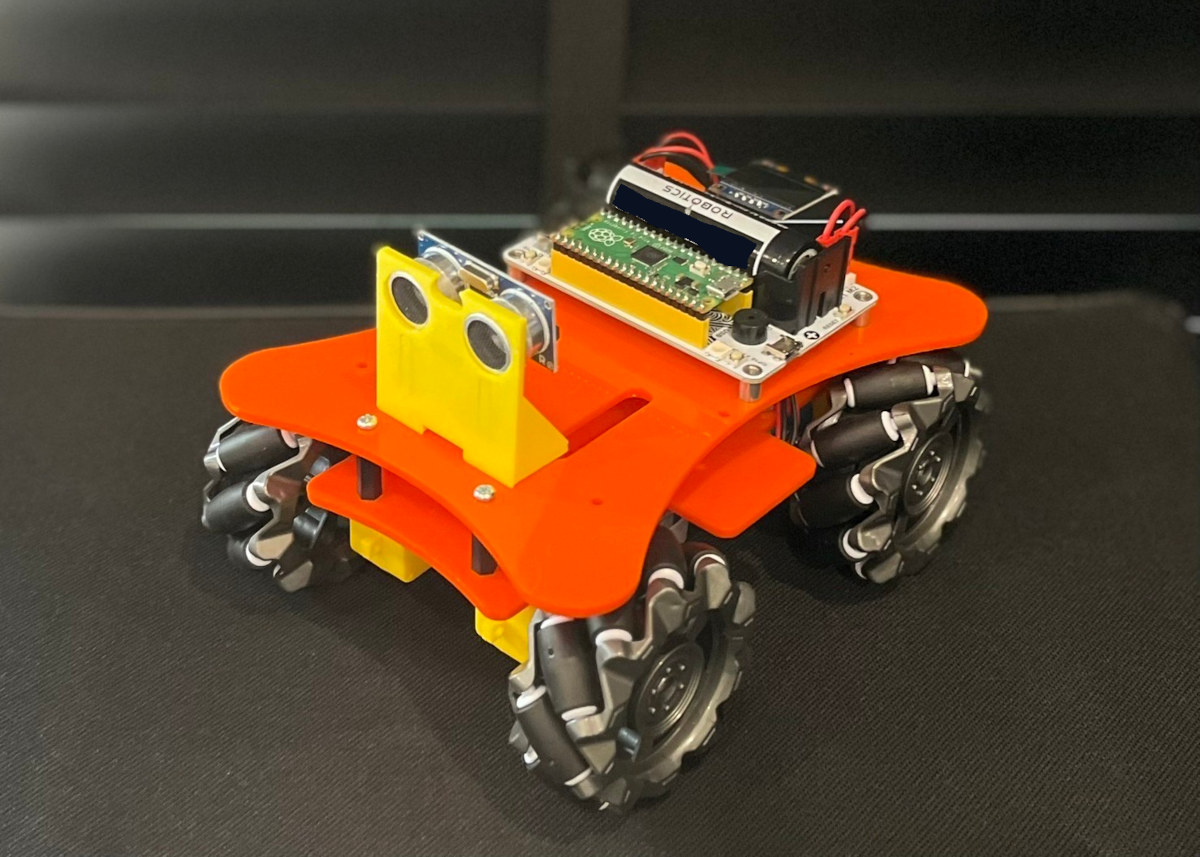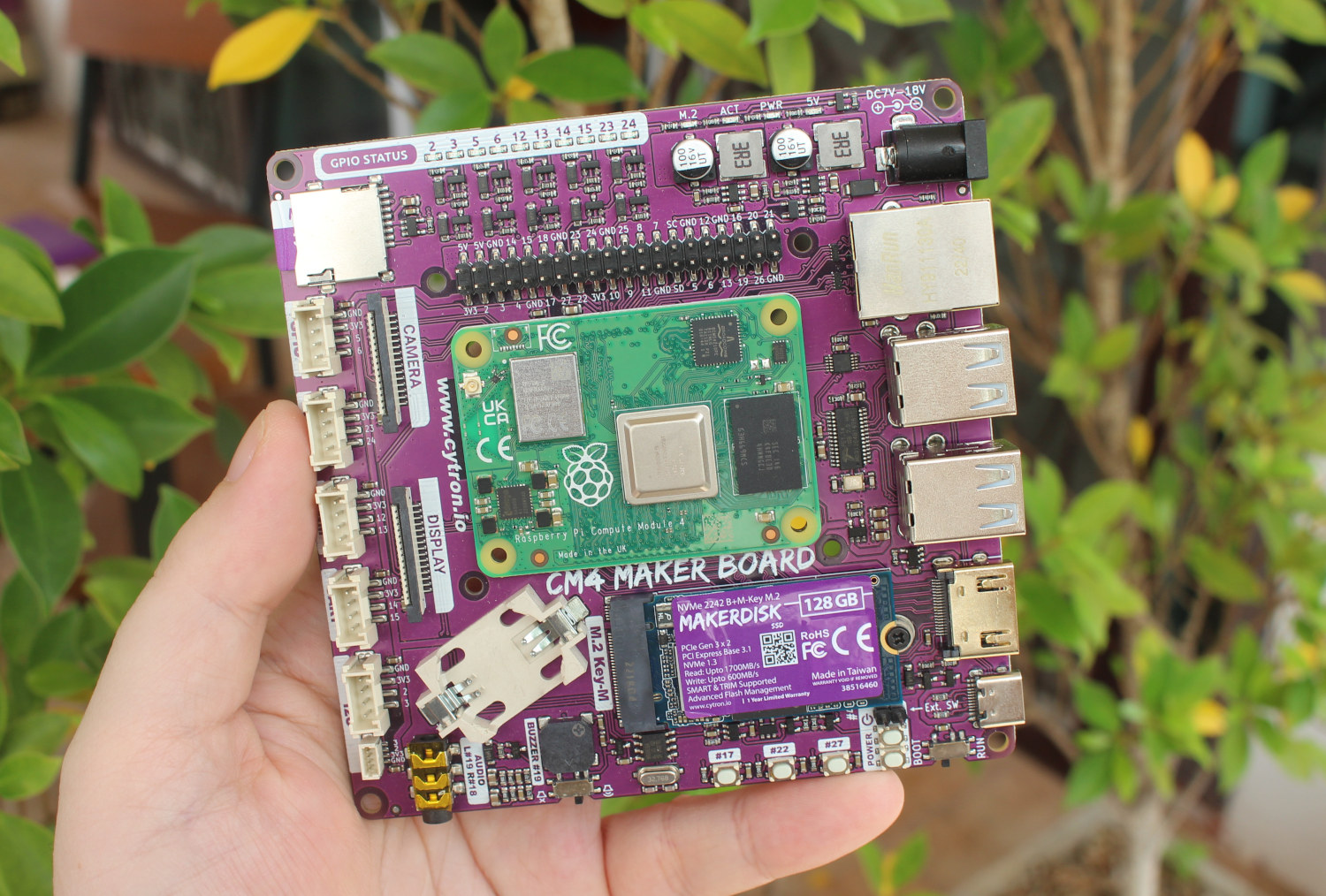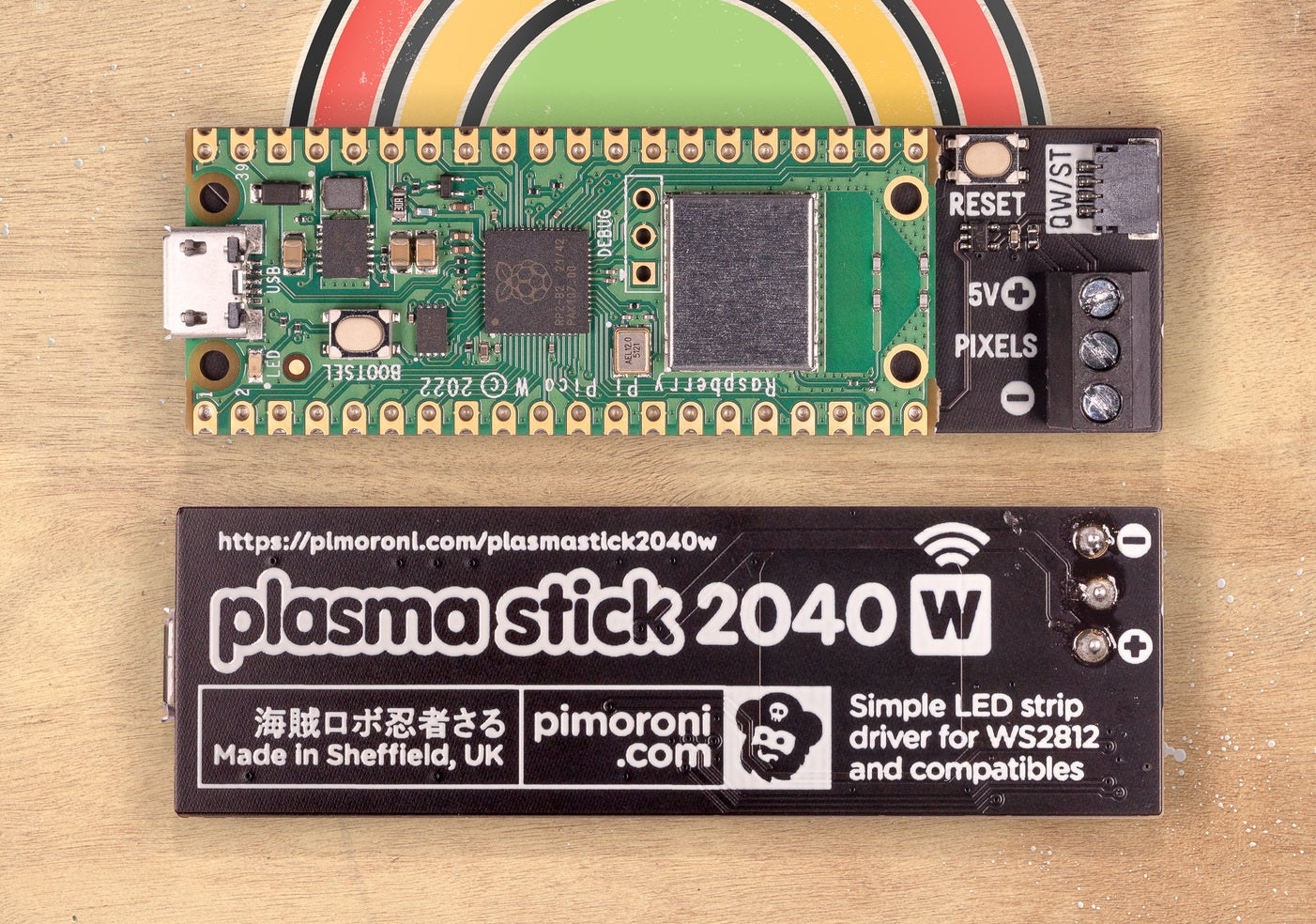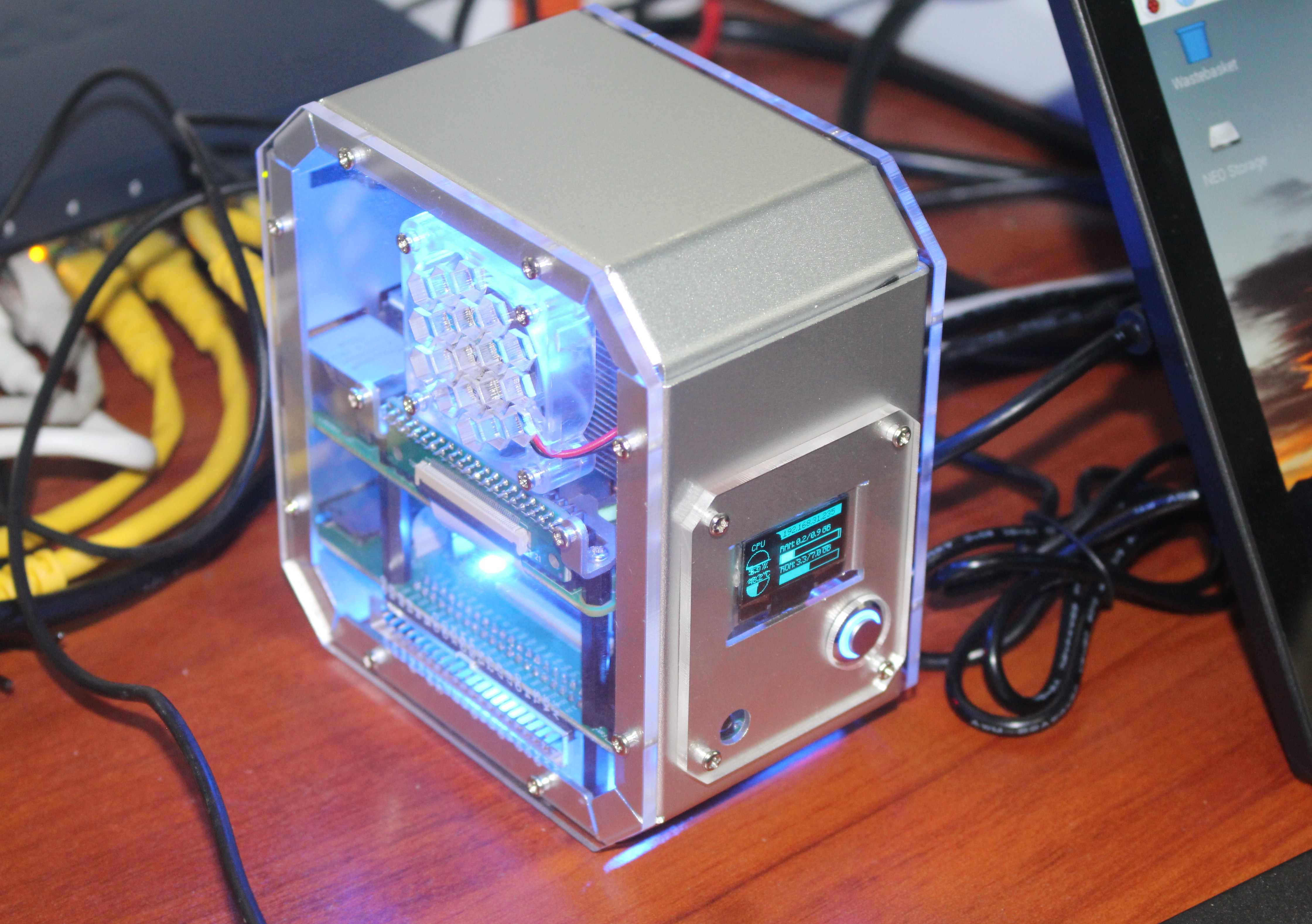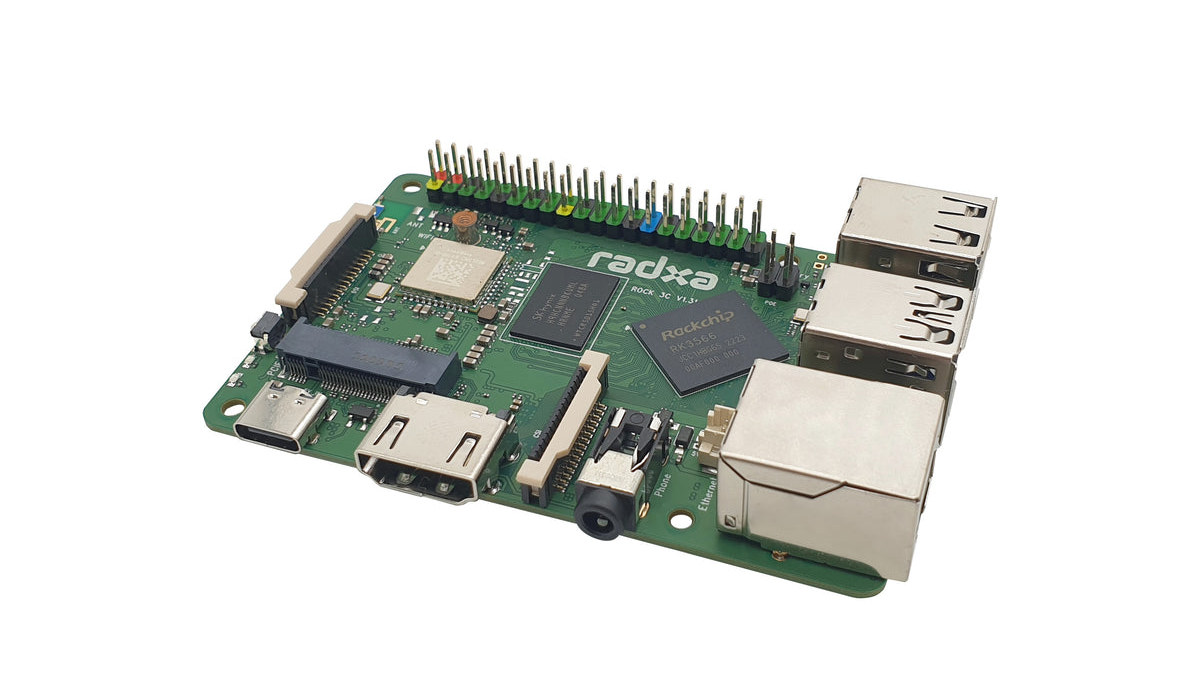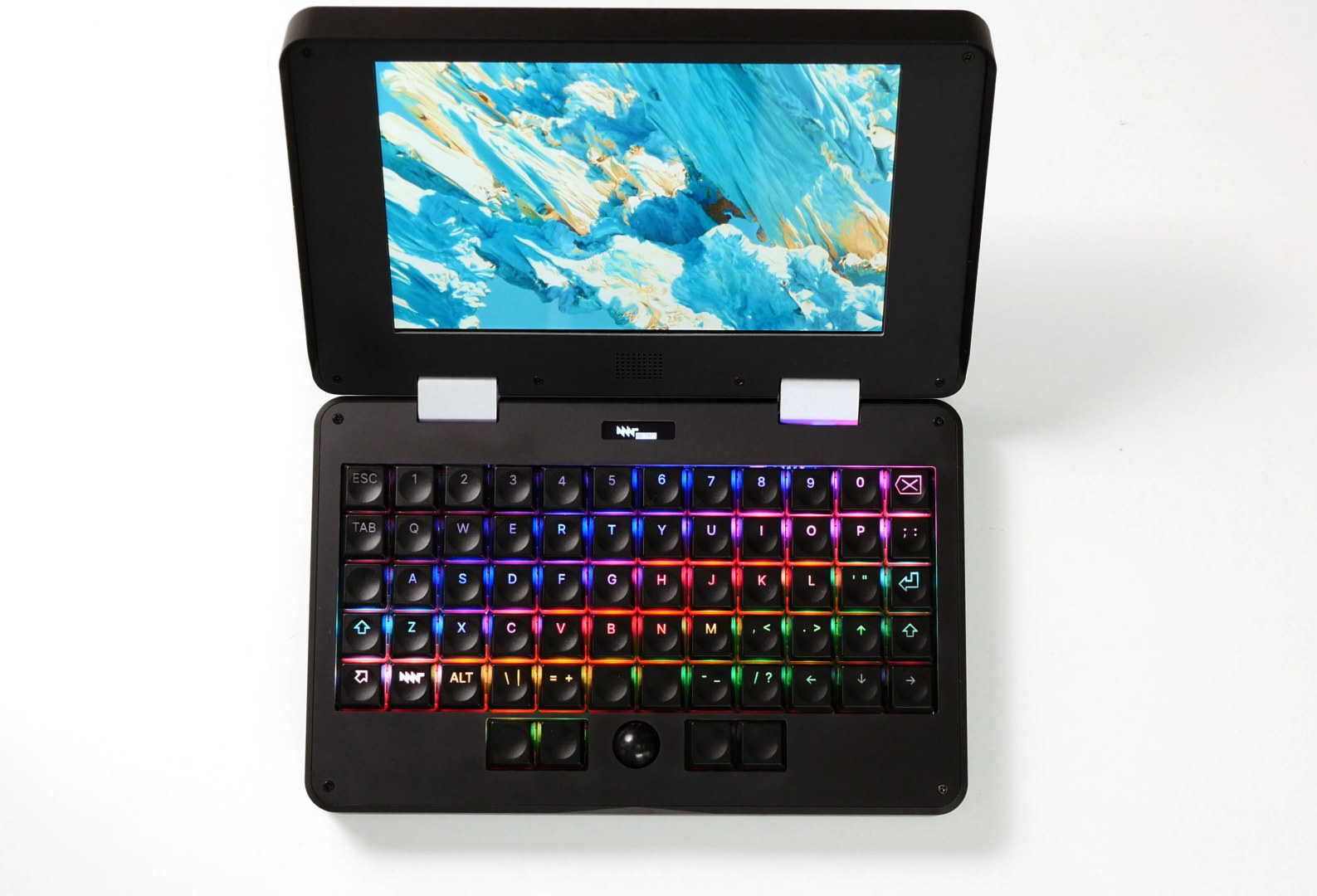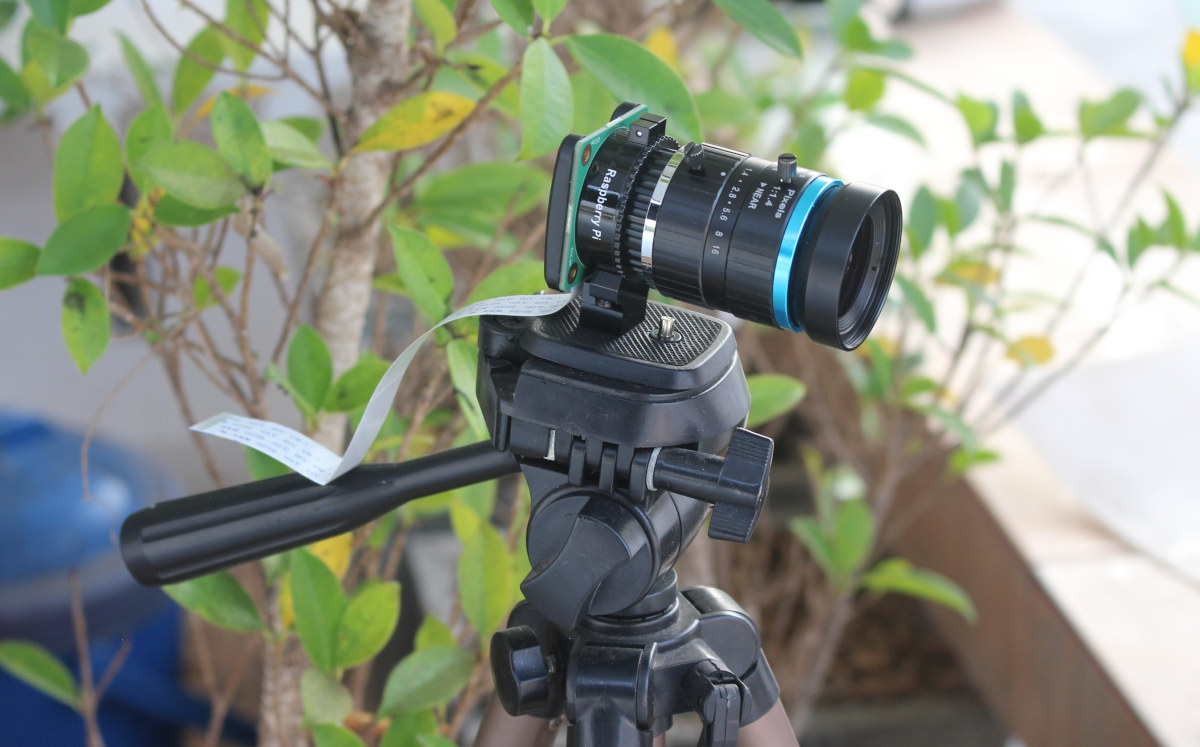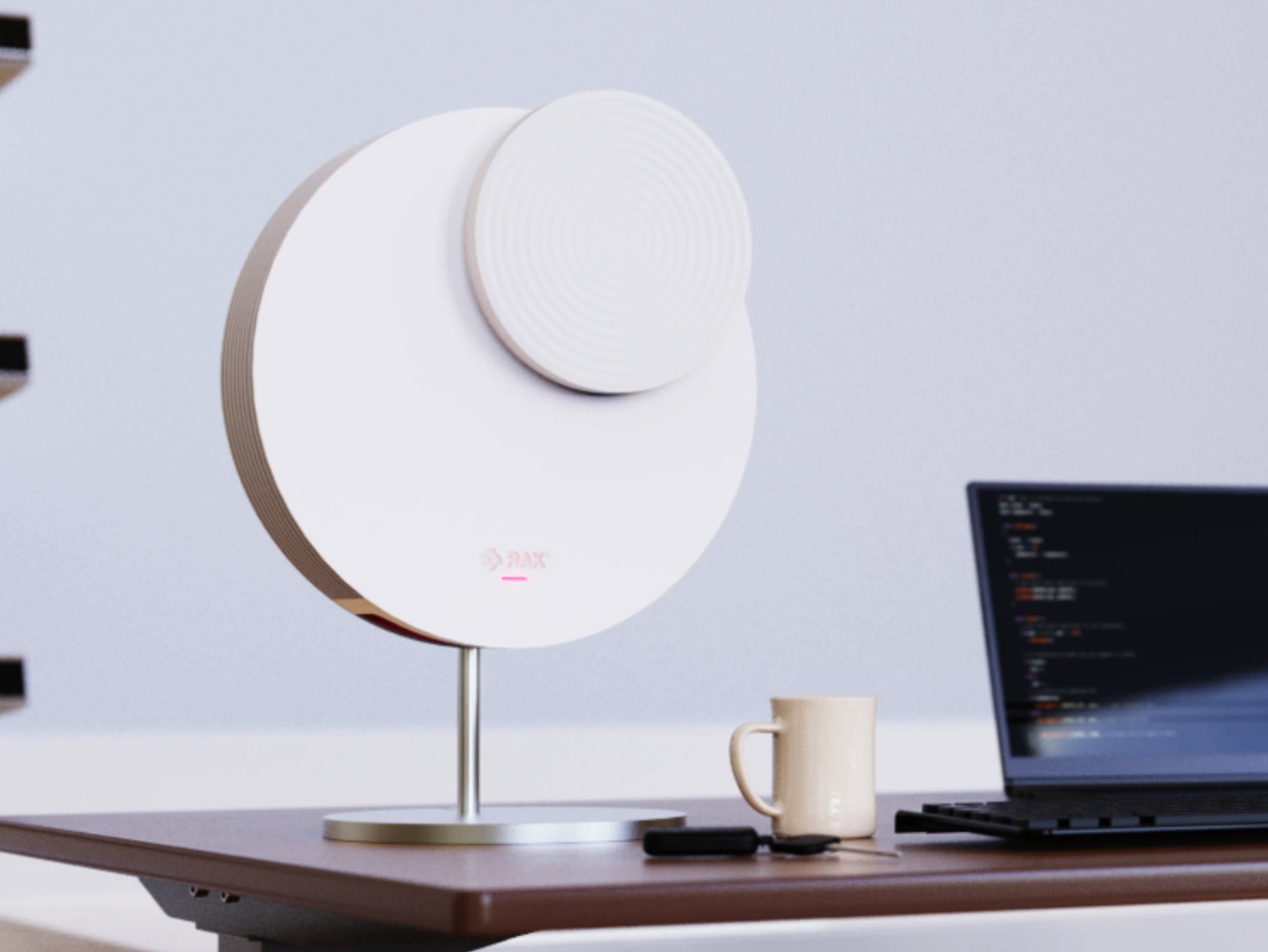ELECFREAKS Wukong 2040 is a multifunctional breakout board designed for Raspberry Pi Pico. It is equipped with interfaces for four DC motors, up to twelve servos, a buzzer, A\B buttons, RGB “rainbow” lights, a Reset button, etc… The board can be powered by a single 18650 3.7V LiPo battery and integrates a power management IC that monitors the battery level and can also charge the battery via a USB charger. Battery life is typically 60 minutes per charge but can last over 120 minutes depending on the load. Wukong 2040 key features and specifications Description of the Wukong 2040 interfaces Specifications and dimensions of the Wukong 2040 Expansion Board for Raspberry Pi Pico The Wukong 2040 breakout board for the Raspberry Pi Pico can control up to four DC motors and up to 12 servo motors as shown in the diagram below. Pinout diagram of the Wukong 2040 board […]
CM4 Maker Board review – Part 1: specifications, unboxing, and first boot
Cytron CM4 Maker Board is a carrier board for the Raspberry Pi CM4 or CM4 Lite system-on-module with plenty of I/Os, support for one M.2 NVMe SSD, and RTC backup battery, a buzzer, and various LEDs for GPIO status that makes the board especially well suited for the education market and prototyping. The carrier board also comes with the usual Gigabit Ethernet and full-size HDMI port, four USB 2.0 ports, five Grove connectors, one Maker port, the omnipresent 40-pin Raspberry Pi GPIO header, and support power input from 7V-18V DC jack or 5V via a USB Type-C connector. CM4 Maker Board specifications Cytron CM4 Maker Board specifications: Supported SoM – Raspberry Pi Compute Module 4 or Compute Module 4 Lite Storage microSD card slot M.2 PCIe 2.0 socket for NVMe 2232/2242 SSD Video Interfaces Full-size HDMI 2.0 port MIPI DSI display connector Camera – MIPI CSI connector connector Audio – […]
Plasma Stick 2040 W adds RGB LED strip controller to Raspberry Pi Pico W board
Pimoroni Plasma Stick 2040 W is a “Pico W Aboard” kit that adds a 5V RGB LED strip controller to the Raspberry Pi Pico W board, as well as a Reset button, and a Qwiic/STEMMA QT connector for expansion. Plasma Stick 2040 W specifications: Raspberry Pi Pico W MCU – Dual Arm Cortex M0+ running at up to 133Mhz with 264kB of SRAM Storage – 2MB of QSPI flash supporting XiP Connectivity – 2.4GHz wireless module with WiFi 4 and Bluetooth Classic + LE USB – 1x micro USB port for power and programming LED strip connector – 3-pin screw terminal block compatible with 5V WS2812/Neopixel/SK6812 LEDs Expansion – Qw/ST (Qwiic/STEMMA QT) I2C connector Misc – Reset button Power Supply – 5V via micro USB port Dimensions – 67 × 22 × 12 mm Since it’s based on the Raspberry Pi Pico board it’s programmable with the official C/C++ and MicroPython […]
Pironman review – A Raspberry Pi 4 enclosure with M.2 SATA, safe power off, RGB LED strip, and more
SunFounder Pironman is a Raspberry Pi 4 enclosure inspired by Michael Klement’s DIY Raspberry Pi 4 mini server with an OLED display and ICE Tower cooling solution, as well as some improvements such as an aluminum alloy and acrylic enclosure, support for an M.2 SATA SSD, a power button for safe shutdown, an IR receiver, and an RGB LED strip. The company sent me a Pironman kit without Raspberry Pi 4 for review. I’ll check the package content, go through the assembly, software installation, and testing of the unique features listed above. Pironman unboxing Some of the main specifications are listed on the side of the package. The enclosure comes fully disassembled with the Pironman board, metal and acrylic panels, RGB LED strip, OLED display, heatsink, fan, adapters, flat cables, screws, standoffs, and so on. The top of the Pironman board (JMS580-V1.8) comes with a JMicron JMS580 USB 3.2 Gen […]
ROCK 3C SBC – A $39+ Raspberry Pi 3 lookalike with Rockchip RK3566-T AI SoC, M.2 NVMe SSD support
Radxa ROCK 3C, also called ROCK 3 Model C, is a Rockchip RK3566-T Arm SBC with up to 8GB RAM and WiFi 5. It mostly follows the Raspberry Pi 3 Model B form factor, but also adds an M.2 PCIe socket for NVMe SSDs. The single board computer also comes with a MicroSD card slot and eMMC flash module socket to boot the OS, a 4Kp60 capable HDMI 2.0 port, a MIPI DSI connector, a MIPI CSI camera connector, a 3.5mm jack with microphone, four USB ports, Gigabit Ethernet, and a 40-pin color-coded GPIO header. ROCK 3C specifications: SoC – Rockchip RK3566-T quad-core Cortex-A55 processor @ 1.6 GHz with Arm Mali-G52 GPU, 0.8 TOPS NPU (AI accelerator) System Memory – 1GB, 2GB, 4GB, or 8GB LPDDR4 2112MT/s Storage MicroSD card slot eMMC module socket M.2 Key-M PCIe socket for 2230 NVMe SSD Video Output HDMI 2.0 up to 4Kp60 2-lane […]
MNT Pocket Reform open-source 7-inch modular laptop launched on Crowd Supply
The MNT Pocket Reform, a smaller version of the MNT Reform laptop, with a 7-inch display has just launched on Crowd Supply with an NXP i.MX8M Plus system-on-module, but also compatible with an NXP Layerscape LS1028A module, Raspberry Pi CM4, Pine64 SOQuartz, and an AMD Kintex-7 FGPA module. The open-source modular laptop also comes with a 128GB eMMC flash, 8GB RAM, WiFi 5 and Bluetooth 5.0 connectivity on-module, an optional 1TB NVMe SSD, a backlit 60-key mechanical keyboard with an optical trackball and four buttons, a micro HDMI port to connect an external display, a few USB ports, and Ethernet through an ix industrial connector. MNT Pocket Reform specifications: SoM – Boundary Devices Nitrogem8M Plus system-on-module with SoC – NXP i.MX 8M Plus quad-core Arm Cortex-A53 @ 1.8GHz with Cortex-M7 real-time core, Vivante GC7000UL GPU, 2.3 TOPS NPU with open drivers, H.264/H.265 Video Decoder with open drivers (Hantro), and HiFi4 […]
Mini review of the Raspberry Pi Global Shutter Camera
Raspberry Pi Trading has just launched the 1.6MP Raspberry Pi Global Shutter Camera which can capture rapid motion without introducing artifacts usually experienced with rolling shutter cameras such as the earlier Raspberry Pi Camera modules, including the latest Raspberry Pi Camera Module 3. The company sent me Raspberry Pi Global Shutter Camera sample together with a 16mm C-mount lens for review, and I’ll report my experience after going through the specifications of the new camera. Raspberry Pi Global Shutter Camera specifications Sony IMX296LQR-C Sensor Resolution: 1.58 megapixels (color) Sensor size: 6.3mm sensor diagonal Pixel size: 3.45μm x 3.45μm Output – RAW10 Back focus length of lens – Adjustable between 12.5 and 22.4mm Lens standards – CS-Mount or C-Mount (C-CS adapter included) Integrated IR cut filter (can be removed permanently if needed) Tripod mount – 1/4”-20 Dimensions – 38 x 38 x 19.8mm (29.5mm with adapter and dust cap) Weight – […]
RAKwireless programmable 5G & LoRaWAN small cell device runs Ubuntu on Raspberry Pi CM4
RAKwireless “All-in-One 5G” is a programmable 64-bit Ubuntu indoor device that integrates AGW (access gateway) through a Raspberry Pi CM4 as well as 5G and 4G LTE cellular and LoRaWAN connectivity. The device is powered through its 2.5GbE PoE++ port and designed for private 5G networks for industrial automation, public safety, and transportation, and RAKwireless says you can also “start earning cryptocurrency by providing LTE cellular and LoRa coverage”, but I could not find details about monetization at this time. RAKwireless “All-in-One 5G” specifications: SoM (AGW) – Raspberry Pi CM4 system-on-module with Broadcom BCM2711 quad-core Cortex-A72 processor with 4GB RAM and 32 eMMC flash, WiFi 5 and Bluetooth 5.0 connectivity 5G/4G cellular connectivity LTE Mode- TDD Frequency Bands – Band 48 (3550 MHz to 3700 MHz); band N78 is also supported for global coverage Channel Bandwidth5/10/15/20 MHz Max TX Power – 24 dBm Receiver Sensitivity – -100 dBm Built-in 2-port […]


